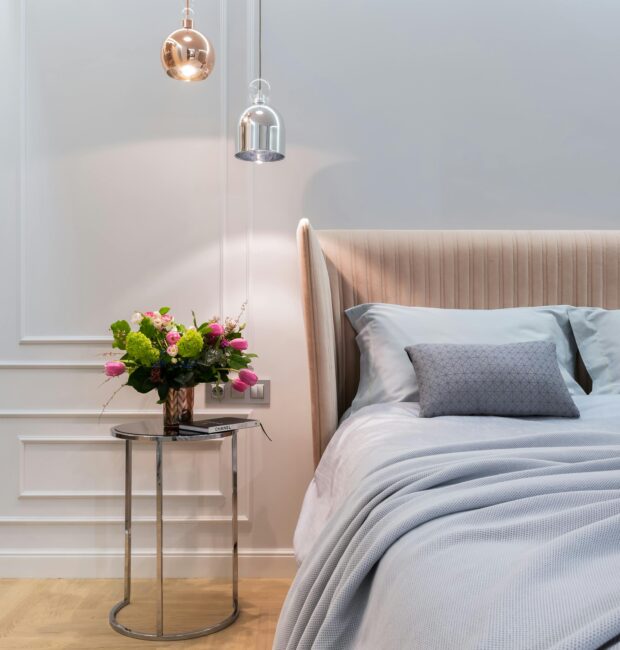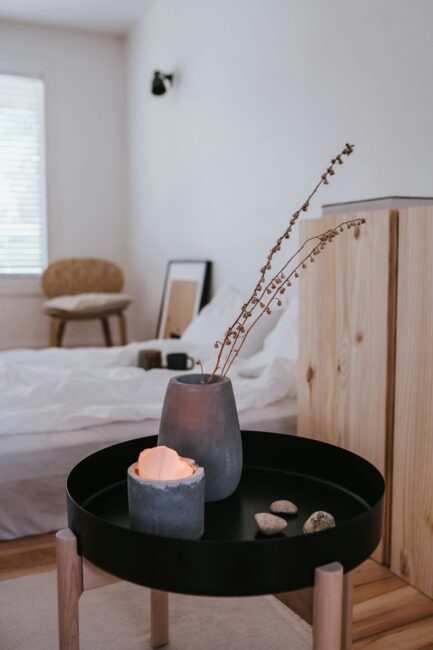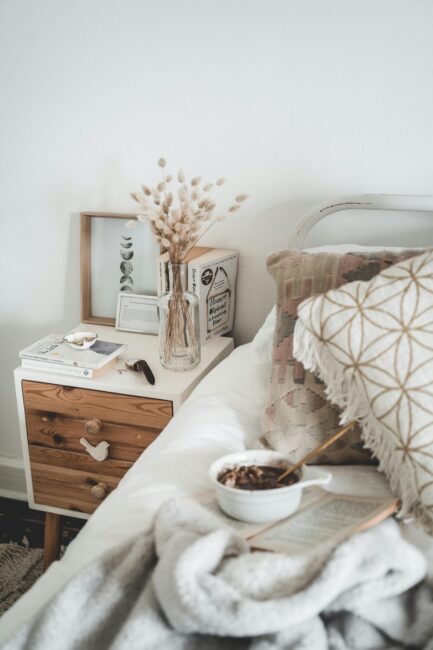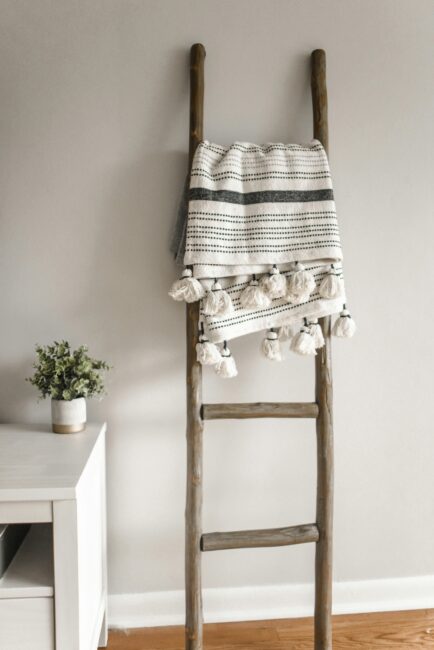
Designing a minimalist bedroom is centered around the principles of simplicity and functionality, aiming to create a space that embodies calm and serenity. The aesthetic is defined by clean lines, a monochromatic color palette, and the thoughtful use of texture and materials to convey a sense of tranquillity. In this design approach, every element serves a purpose, and there is an emphasis on the quality and craftsmanship of the pieces that are chosen. Essential furniture such as a modern ottoman bed provides both comfort and practical storage solutions without compromising the room’s airy and uncluttered feel.
The philosophy of “less is more” guides the selection of items within a minimalist space, deterring from unnecessary ornamentation or clutter. Decorative elements are kept to a minimum, with a focus on items that bring joy or are necessary for daily life. The result should be a serene and restful bedroom environment where one can relax and rejuvenate without the distraction of excess. Lighting, too, plays a pivotal role, with an emphasis on natural light sources complemented by subtle artificial fixtures to enhance the room’s soothing atmosphere.
Key Takeaways
- Minimalist design promotes a tranquil and functional bedroom space.
- Essential bedroom furniture should combine aesthetics with utility.
- Limited decor and strategic lighting contribute to a restful environment.
Fundamental Concepts of Minimalist Bedroom Design

Minimalist bedroom design centers on the ethos of “less is more,” striving for a harmonious balance between form and function. It brings together aesthetic simplicity with practicality to fashion spaces that offer tranquillity and comfort.
Understanding Minimalism in Bedroom Spaces
Minimalism in bedroom spaces is fundamentally about creating a clutter-free environment. This involves choosing items that serve a clear purpose and contribute to the overall calm of the room. The goal is to create a zen-like atmosphere where each piece has room to “breathe,” thus fostering simplicity and serenity.
Choosing the Right Furniture
Furniture in a minimalist bedroom should embody functionality and clean lines. A well-picked bed frame and nightstand can define the space without overwhelming it. Pieces that double as storage, such as beds with drawers or a multi-purpose dresser, can maintain a clean aesthetic while providing utility.
Selecting a Color Palette
The color palette in a minimalist bedroom is typically a neutral or restrained palette that can create a soothing backdrop. It can be accentuated with a subtle accent wall or bold colors used sparingly as an accent. Choosing consistent shades contributes to a harmonious and comfortable environment.
Strategic Use of Textures and Materials

Textures and materials bring warmth and depth to minimalist spaces. Combining natural materials like wood with soft textiles such as linen bedding can enhance comfort without clutter. The strategic use of textures, whether through a duvet or decorative items, adds interest without departing from minimalist principles.
Implementing Principles of Clean Lines and Shapes
Minimalist bedroom design employs clean lines and simple shapes to keep the space feeling open and unfettered. This can encompass everything from furniture with sleek profiles to matching wood finishes. The careful mixing of shapes and textures, while keeping to a minimal number, can create a refined and simple interior decorating statement.
Enhancing Bedroom Aesthetics and Function
Designing a minimalist bedroom requires a delicate balance between aesthetics and function, with an emphasis on simplicity and thoughtful use of space. The following subsections delve into how one can achieve a calming and practical environment conducive to relaxation and tranquillity.
Balancing Aesthetics and Practicality
In a minimalist bedroom, the principle of “less is more” is vital. Aiming for uncluttered space ensures that every element serves a purpose, be it functional or aesthetic. Clever use of hidden storage options helps maintain a tidy appearance. Natural light should be maximized to enhance the mood of the room, making it feel more open and relaxing.
Incorporating Statement Decorations and Lighting

A minimalist aesthetic can be complemented with an accent wall or simple florals, which add character without overwhelming the space. In terms of lighting, a statement lighting piece or sconces by the bedside table can serve as both functional items and decorative elements, casting soft illumination that shapes the room’s ambience.
Opting for a Balanced Approach to Accessories

While accessories should be kept to a minimum to avoid clutter, strategic placement of a few decorative items, such as books or plants, can personalize the space. Items chosen should maintain the room’s simplicity and adhere to the minimalist mantra, while still providing a sense of home.
Applying Concepts of Global Design Philosophies
Incorporating global design philosophies like Japanese design, feng shui, hygge, lagom, or hodo-hodo can bring balance and harmony into the minimalist bedroom. These philosophies encourage a connection with natural elements, emphasise comfort within simplicity, and focus on the essential, making the bedroom both functional and aesthetically pleasing.
Conclusion
In designing a minimalist bedroom, be sure to prioritize both functionality and simplicity. Choosing quality over quantity, emphasizing clean lines, and opting for a neutral colour palette are all integral to creating a space that embodies tranquillity and order. By incorporating minimalist decor and maintaining an organized environment, you can achieve achieve a bedroom that is not only aesthetically pleasing but also a haven for relaxation. Minimalism in bedroom design is about finding elegance in simplicity and ensuring every element serves both a purpose and contributes to a peaceful retreat.
This post contains Amazon affiliate links.